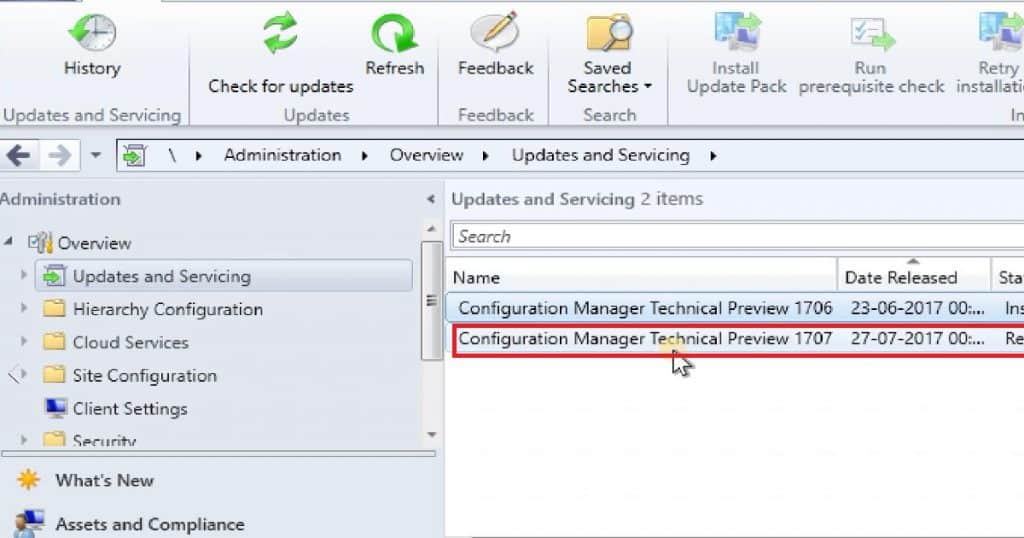Let’s discuss the SCCM ConfigMgr CB 1707 Preview Upgrade Video Tutorial. The SCCM/ConfigMgr CB 1707 preview version was released last week. I enjoyed upgrading my SCCM CB 1706 preview version to 1707.
As expected, this was a straightforward process for me. I didn’t see any issues during the upgrade process of SCCM CB 1707. We see the SCCM ConfigMgr CB 1707 Preview Upgrade Video Tutorial in this post.
Preview versions of SCCM CB should NOT be deployed to a production environment. This is similar to the Windows Insiders program, which helps SCCM admins test the new features of SCCM CB.
Before installing this technical preview version, you can review the limitations of the SCCM CB version.
Table of Contents
- SCCM CB 1708 Preview Upgrade Video Guide New Features Configuration Manager ConfigMgr
- SCCM Server OS Upgrade WSUS SUP Notes from Real World
- SCCM Server In-place OS Upgrade to Server 2022 Guide
- New Features in SCCM Technical Preview 2401
- New Key Features of SCCM 2309 | Top Improvements
- Download SCCM 2309 Early Ring Version using PowerShell Script
- SCCM Versions Build Numbers Client Console Site
- End of Support Dates for SCCM CB Current Branch | ConfigMgr | SCCM End of Life
- SCCM Unsupported Deprecated or Removed Features
SCCM 1707 Preview Guide Upgrade Process and New Feature Overview
In this video, you will find all the details about the SCCM 1707 Preview Guide Upgrade process and an overview of the new features. The guide will walk you through each step of the upgrade process, ensuring you understand how to implement it smoothly.
SCCM ConfigMgr CB 1707 Preview Upgrade Video Tutorial
The screenshot below provides a comprehensive look at the new features introduced in SCCM 1707, helping you make the most of the latest updates and improvements.
What are the New Features Introduced in the SCCM CB 1707 Preview?
My favorite features of the SCCM CB 1707 preview version are Windows Defender application guard policies for Windows 10 RS3 and PowerShell Script parameter investments.
- Client Peer Cache support for express installation files for Windows 10 and Office 365
- Surface Device dashboard
- Percent of Surfaces
- Percent of Surface models
- Top five operating system versions
- Configure and deploy Windows Defender Application Guard policies for Windows 10 RS3
- Add parameters when you deploy PowerShell scripts
Known Issues with SCCM CB 1707 Upgrade
SCCM CB 1707 upgrade process has not changed much. It’s the same as the preview SCCM CB preview upgrades. New features have been introduced in this preview version. There are some known issues with an upgrade when you install a passive primary server.
The issue is the only application for the SCCM environment with 1706 TP and used the site server always-on, a feature that means the passive site server was configured.
We are on WhatsApp now. To get the latest step-by-step guides, news, and updates, Join our Channel. Click here. HTMD WhatsApp.
Author
Anoop C Nair is Microsoft MVP! He is a Device Management Admin with more than 20 years of experience (calculation done in 2021) in IT. He is a Blogger, Speaker, and Local User Group HTMD Community leader. His main focus is on Device Management technologies like SCCM 2012, Current Branch, and Intune. He writes about ConfigMgr, Windows 11, Windows 10, Azure AD, Microsoft Intune, Windows 365, AVD, etc.

